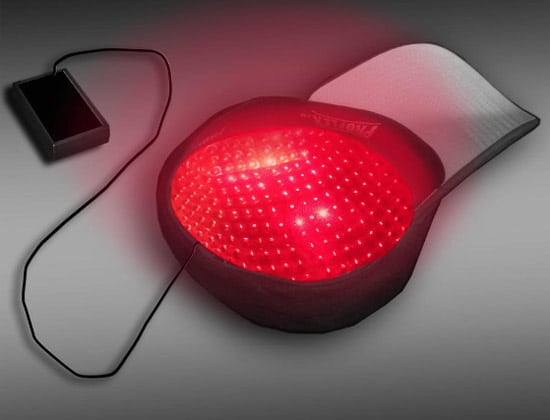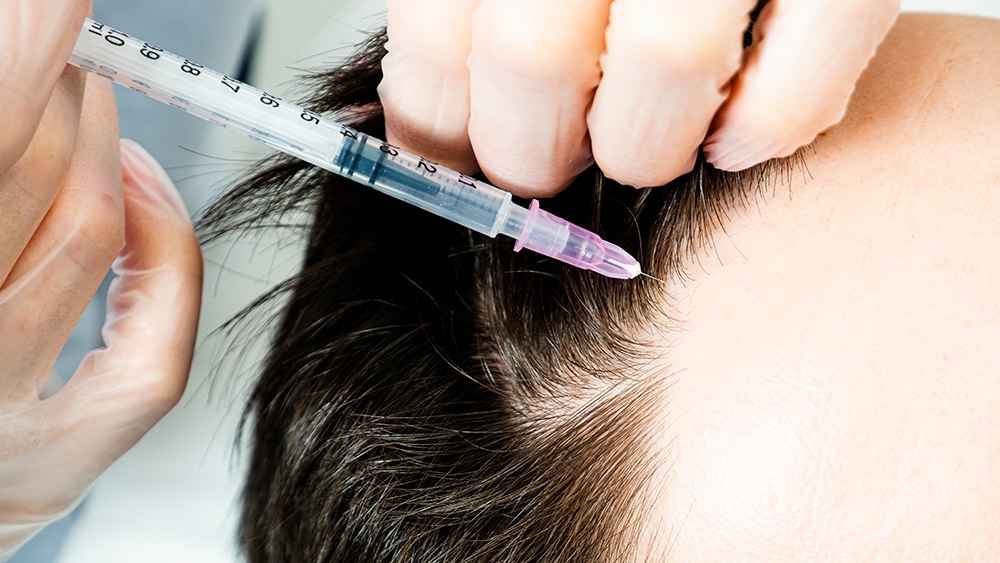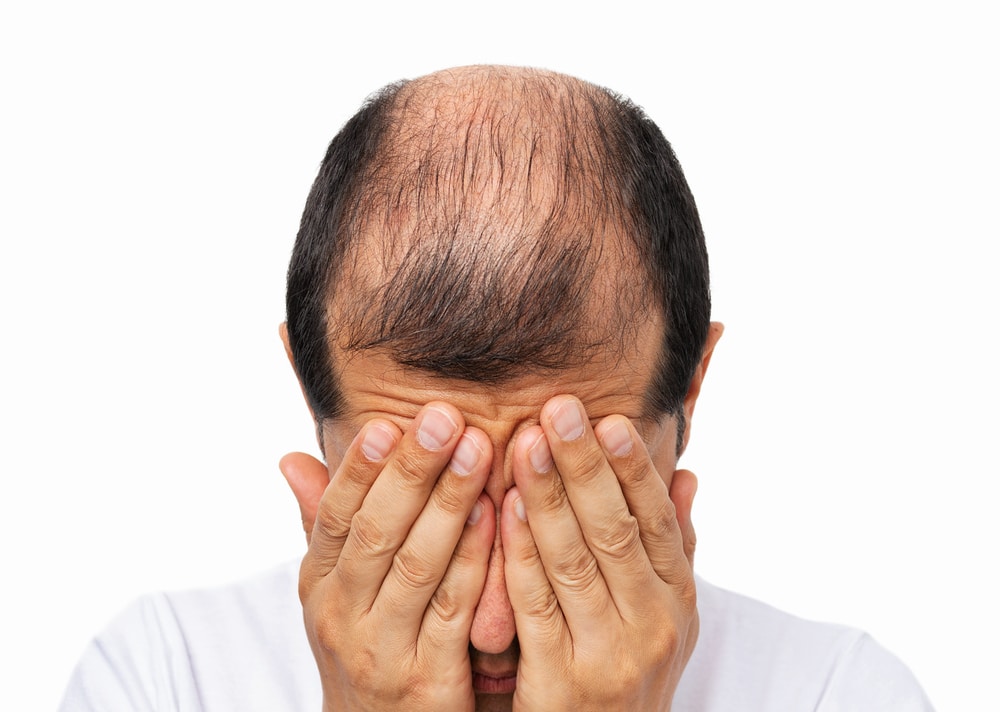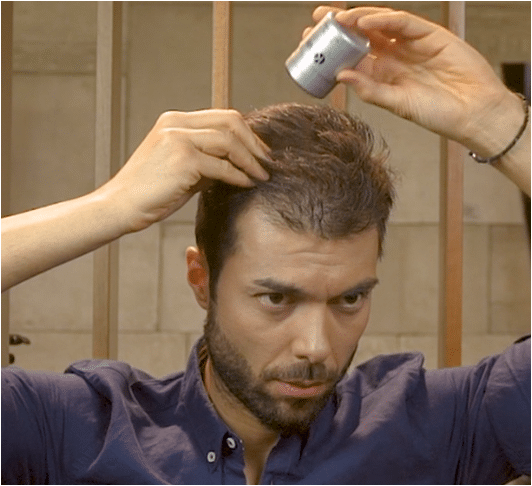Can Hair Grow Back Without a Hair Transplant?
Many people wonder whether it’s possible to regrow hair without undergoing a hair transplant. Is there a medication or hair loss treatment that can replace hair transplantation?
Is there a way to “fill in” bald areas of the scalp where the hair follicles have stopped producing hair altogether?
Unfortunately, the short answer to both questions is: no.
First, it’s important to clarify the difference between regrowing hair in a bald or severely thinned area and strengthening existing hair in a region where follicles have been weakened due to androgenetic alopecia (pattern hair loss).
In the first case, we’re referring to areas where the follicles are no longer active—they have stopped functioning entirely. In the second, we’re talking about stimulating weakened follicles, which may still produce very fine hairs or even peach fuzz.
The “Miracle” of Cosmetology: Hair Regrowth Without a Transplant!
The internet and television are flooded with advertisements for anti-hair loss lotions, creams, sprays, and shampoos that promise miraculous results. According to the marketing, those who try them see their hair “grow back” without ever needing a hair transplant—easily, quickly, affordably, and permanently!
And for the skeptics? There’s always the classic “before and after” photo—usually taken just a month apart.
A miracle!
At least, that’s the only word some might use to describe it…
How Do Hair Loss Treatments Work (Without a Hair Transplant)?
The mechanism of action behind all approved hair loss treatments is essentially the same.
They first aim to slow down the rate of hair loss, and then work to block the effects of dihydrotestosterone (DHT)—the hormone primarily responsible for weakening hair follicles.
Under the influence of DHT, hair follicles gradually shrink and produce increasingly thinner and weaker hair shafts until they generate only fine vellus hairs (“peach fuzz”) and, eventually, cease functioning altogether.
Once a follicle becomes inactive—or essentially “dead”—there is no known way to reactivate it.
This is why starting treatment early, ideally at a young age or at the first visible signs of hair thinning, significantly improves outcomes. Early intervention can help preserve existing hair and, in some cases, even restore fuller density without the need for a hair transplant

How to Choose the Right Hair Loss Products Without a Hair Transplant
The most important rule when choosing hair loss products as an alternative to a hair transplant is this: choose only products that are medically approved.
Approval from the relevant health authorities means that the product has undergone thorough testing for both safety and efficacy, through clinical trials designed and conducted according to strict scientific standards—such as study design, sample size, and statistical analysis.
If regulatory approval is your main criterion when selecting a hair loss treatment, then your options immediately become clearer.
In addition to FDA-cleared laser therapies, there are currently two globally approved medications for treating androgenetic alopecia (male or female pattern hair loss) and for stimulating new hair growth:
- Minoxidil
- Finasteride
There are also other treatments that mimic the effects of minoxidil and have shown promising results—such as Revivogen or Dutasteride.
However, even in these cases, their effectiveness is supported by clinical studies, not just anecdotal reviews or enthusiastic marketing claims.

What to Watch Out for When Choosing a Hair Loss Treatment (Without a Hair Transplant)
Before starting any hair loss treatment as an alternative to a hair transplant, it’s important to do your research.
Look online for the official distributor of the product. Be cautious if:
- The product is sold only through social media (e.g. Facebook) or via telemarketing.
- The online store has no visible address or contact information.
- There’s no official website that provides detailed, transparent information about the product.
If you can’t find reliable details such as:
- A full list of ingredients,
- Clear instructions for use,
- Or clinical studies supporting the treatment’s effectiveness for hair regrowth—
—then it’s probably best to stay away.
When it comes to treating hair loss, especially without surgery, informed decisions are essential—not just for your wallet, but for your health and safety.
When Will I See Results From a Hair Loss Treatment?
One thing you should keep in mind: no treatment produces visible results within just one month. It typically takes at least 3 to 4 months before any noticeable improvement appears.
This delay occurs because treatments don’t affect the hairs currently visible on your scalp. Instead, they influence the growth cycle of hair follicles, meaning that any benefits will only be seen in new hairs growing during the next hair cycle.
The first clinical signs of regrowth or improved scalp coverage usually become visible only once the new hairs reach about 1–2 cm in length, which generally takes 4 to 6 months.
So, if someone claims they saw “a full head of hair” just one month after starting treatment, they either don’t understand how hair loss treatments actually work—or they’re deliberately trying to mislead the public, relying on the average person’s lack of specialized knowledge
Stem Cell (PRP) Therapy for Hair Loss
Many clinics and hair institutes promote Platelet-Rich Plasma (PRP) therapy as the most advanced, non-invasive treatment for hair loss without a hair transplant, regardless of its cause.
In the PRP method, a small amount of the patient’s blood is drawn and then centrifuged, separating its components—red blood cells, platelets, and plasma.
A portion of plasma that is rich in platelets is then isolated and processed further. During this process, the platelets are activated, triggering the release of growth factors stored within their granules.
Finally, these growth factors are injected directly into the affected areas of the scalp, where they aim to stimulate and support hair follicle activity.

Effectiveness of PRP Therapy in Medicine and Hair Loss
PRP therapy has been proven useful in several medical fields. The substances released by activated platelets are known to contribute to faster hemostasis and accelerated tissue healing. They are also very helpful in bone regeneration, maxillofacial surgery, and other medical applications.
However, regarding hair loss, the exact mechanisms by which PRP may promote hair follicle growth have not been thoroughly studied. Human studies are scarce and often have significant design limitations, resulting in questionable evidence. Most studies are not randomized or double-blind and provide weak and conflicting results.
About half of the published research reports only moderate increases in the average hair shaft diameter (but no increase in hair density), while the other half indicates minimal or no efficacy. Some studies have shown that PRP induced hair growth in certain patients, whereas others did not, and no studies exist for rarer causes of hair loss.
Therefore, concerning PRP and hair loss, there is currently a lack of sufficient evidence to classify PRP among the proven effective treatments for hair loss.
PRP Therapy and Hair Transplantation
On the other hand, there are published studies reporting benefits of using PRP in hair transplantation regarding graft survival, as well as the acceleration and optimization of healing in both the donor and recipient areas. These studies make it clear that, unlike in general hair loss treatment, PRP can provide significant advantages in the context of hair transplantation.
Why is PRP Therapy so Popular?
PRP therapy is a modern autologous treatment that generates significant profit for those who market it. It requires multiple sessions and may offer some limited effectiveness, which helps sustain its “myth.” However, the results are not permanent. Like all hair loss treatments, its benefits last only as long as the treatment is continued. The effects of any hair loss therapy do not “store” in the scalp to work indefinitely. Therefore, if PRP shows positive results for someone, they will need ongoing sessions indefinitely to maintain hair without undergoing a hair transplant.
This is precisely why many people, initially full of enthusiasm about PRP for hair restoration, eventually realize that the outcomes fall far short of the promises made, resulting in lost time, money, and, most importantly, emotional distress
Is Hair Transplantation the Solution to Hair Loss?
Whether a hair transplant is the right solution for someone’s hair loss can only be determined by a specialized physician after a thorough examination. For instance, if the temples have receded significantly or there are completely bald areas on the scalp, then only a hair transplant can effectively cover and fill these gaps.
On the other hand, if someone is experiencing noticeable thinning and their hair is losing volume, with some areas becoming less dense than before, an approved medical treatment for hair loss might prevent further progression and delay the need for a hair transplant for many years — or possibly avoid it altogether. It’s important to note that hair transplantation does not exclude the use of medical treatments; in fact, combining a transplant with pharmacological therapy has been shown to enhance overall effectiveness in many cases.
The best approach to treating hair loss, whether through medication or transplantation, depends on accurately diagnosing the underlying cause by a dermatologist or a physician specialized in hair restoration. Only an experienced and qualified doctor can determine the most effective strategy to combat hair loss and assess whether it’s possible to restore hair without surgery, based on the patient’s individual condition, clinical presentation, and needs.











